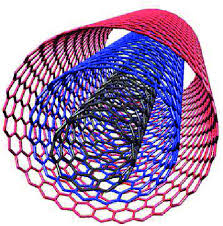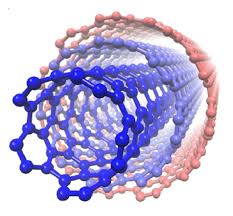Controlled growth of monolayer and multilayer carbon nanotubes (SWCNTs and SWCNTs) based on nano-microelectronics (PhD).
Researcher and author: PhD student Afshin Rashid
Note: For controlled fabrication and growth of monolayer and multilayer nanotubes (SWCNTs and SWCNTs) molecular equipment based on SWCNTs is selected in the styrene direction to obtain nanotubes with similar properties. In the CVD method of carbon monoxide, it is found that both Co-MCM-41 and Co-Mo t-Catalys create a narrow distribution system of specific SWCNTs with (m, n) but still produce about 20 different types of nanotubes with (m, n). .
The FeRu bimetallic catalyst in the CVD method with methane produces a narrow distribution of SWCNTs with diameters less than (2 to nm.2.1). There are also cases of enriched samples of semiconductor SWCNTs via plasma intensified chemical vapor deposition (23 PECVD). Semiconductor SWCNTs of 96% purity are obtained using a combination of methods (PECVD) and rapid heating. In this way, enriched samples of metal SWCNTs grow through pyrolysis of a (monohydroxy homolog) alcohol as a carbon source on an MgO / Co-Fe catalyst. In this case, the SWCNTs produced contain 65% more purity than the metal SWCNTS. Except that they produce SWCNTs from iron nanocatalysts under atmospheric (helium) or (argon) with different ratios of hydrogen and water at high temperatures and according to Raman spectroscopy (RAMN) and electrical experiments FET can also achieve 91% efficiency in the productionof metallic nanotubes .
Most synthesis methods have been able to produce one or two major species of SWCNT with a frequency of 20-30%, along with many other species of similar diameter. An interesting way to synthesize nanotubes with similar chirality is to use organic synthesis methods. In this way, the shortest chair nanostructures can be fabricated with a structure called cyclic carbon nanotubes, by SWCNTs molecules. They are produced and produced through cyclic enhancement reactions (Diles-Alder), but these industrial methods are by no means truly industrial. If high purity SWCNTs are used as the primary seed and as the template for growth during centering, the product chirality will be similar to the template, and the method would be economically feasible and scale up possible.
Conclusion:
The chemical methods of synthesis, separation of SWCNTs based on the diameter, metal or semiconductor and optical activity . In the case of chemical methods of synthesis of two core strategies are: First, the use of chemicals, reactions to the choice of certain species of SWCNTs done in plain view and increase its scale. But the purity of the product is not high and the intrinsic properties of SWCNTs are altered by chemical reaction. Another strategy is to link functional groups to specific types of SWCNTs and SWCNTs via covalent interactions . In this way, there is a good return on the classification of SWCNTs, and there are good recovery methods for obtaining a purity product . But these methods It is not easy to scale because it is difficult to select large quantities of SWCNTs with (m, n) in large quantities .
Author: Engineer Afshin Rashid
PhD student of Nano-Microelectronics at Islamic Azad University, Science and Research Branch, Tehran




